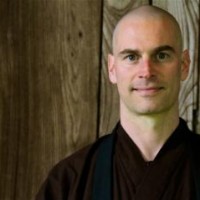Transcribed talk by Roshi Pat Enkyo O’Hara
Originally published by The Village Zendo
When we begin sitting, we are often immediately relieved that we’ve finally sat down and started to practice. We settle into the quiet and we bliss out for a while. But then, if we are really aware, we discover that we may be actually less comfortable than we were before. Somehow, things we have buried or numbed start to surface. One of the things we might become aware of is how angry we actually are. Our first reaction, of course, will be to try to get rid of this anger. After all, doesn’t one of the Buddhist precepts say, “Do not be angry.” We live in a culture which doesn’t tire of telling us to express our anger, that it’s not good for us to hold it in, that repressed anger actually causes disease. And yet, those of us who grew up in a difficult families learned that it wasn’t safe to express anger. We would not be loved, supported or even acknowledged were we to do so. So, we found ways to hide, to cover our anger and we became very good at it. Yet years later, this cover would be blown whenever anything occurred that tapped into that hurt. We might flare up, totally out of control like a smoldering fire that has just had gasoline poured on it. I know I broke dishes out of helpless rage at my disappointment with others. This only made me all the more wary of it! It’s been only after years of practice and attention, that it has become slowly easier for me to experience my anger immediately and to see what is triggering this anger and to skillfully learn from it.
The question is how we can create a spacious container so that we can feel the anger without creating more angry karma? How can we ease our mind to the point that anger can arise and not be a hemorrhaging of resentment, rage or revenge, but rather a set of sensations and feelings that we experience, giving rise to healing and nourishing? Taking a breath, sinking into that space of not knowing, not judging, we must first surrender to the feeling of anger. Being the anger completely is not knowing, not being caught up with the story of our anger – which is really a distraction. The story of our anger is not the thing itself. Can we just sit with the experience of anger, its raw, powerful energy? Can we experience the pacing pulse, the pounding heart, the tingling skin, the hot energy as it courses through us? If we can do that we are not cutting it off or repressing it. Rather we are experiencing it with total awareness, allowing it full play. The trick is to let go of the plot, the thing that says, “I have been wronged!” “How dare they?” and settle instead into the pure experience of the feeling and how powerful it is. In our daily life, there may be the fear that if one allows oneself to truly fill up with the anger it will take one over and one will do or say something that one will later regret. On the cushion, there is more of an opportunity to safely experiment with this, to observe oneself fill up with this energy, feel it and watch it disappear, just as suddenly as it appeared.
Truly “being” the anger is a liberating and empowering feeling. Whether it’s dealing with the minor squalls of irritation and impatience that daily beset us, like when the person jumps ahead of us in the bank line or when we’re hit with a larger storm such as when our bicycle or car is stolen, for example, or we don’t get that promotion, it’s the same practice. Letting go of the drama and observing and noticing our bodily reactions as the organism prepares for fight out of a prehistoric survival instinct. Can we attend to it mindfully? Can we notice what we feel and where we feel it.
This true abstaining from anger becomes a teaching. We begin the healing process, having glimpsed wholeness. It is only from this place of having born witness that true compassion arises and true healing can take place. It is from that place that one can then move to deal with the injustice that surrounds us and to act skillfully so as not to add to it. In the last six months I have witnessed deep healing at the Peacemaker Auschwitz Retreat and at the National AIDS Update Conference, contexts where we might find righteous wrath. What is it that transformed that potential anger? Can we imagine a speaking out, an assertion of the rights and nurturing of others, that does NOT come from our personal, ego-based anger? How would that anger look – a selfless, energy that heals? Is that even anger at all? “When the wind blows through the bamboo grove, the trunks clatter against one another. When it has passed, the grove is quiet once more.” (16th century Chinese)
______________________________
LESSONS FROM THE LOTUS SUTRA
with Roshi Pat Enkyo O’Hara
Feb 25 – 26, 2012
Join us for this weekend workshop integrating meditation practice and textual study. Roshi Pat Enkyo O’Hara will teach from the entertaining and insightful parables of the Lotus Sutra, drawing on her wealth of knowledge, her great sense of humour, and her own engagement with modern, urban, everyday Buddhism. Participants will learn some basic forms of Zen practice (sitting and walking meditation) and discover new ways to take that practice beyond the cushion and out into the streets. Come prepared to meet many buddhas, do a little time-travelling, and maybe even a little dancing (not mandatory, but see how you feel).






Read 5 comments and reply